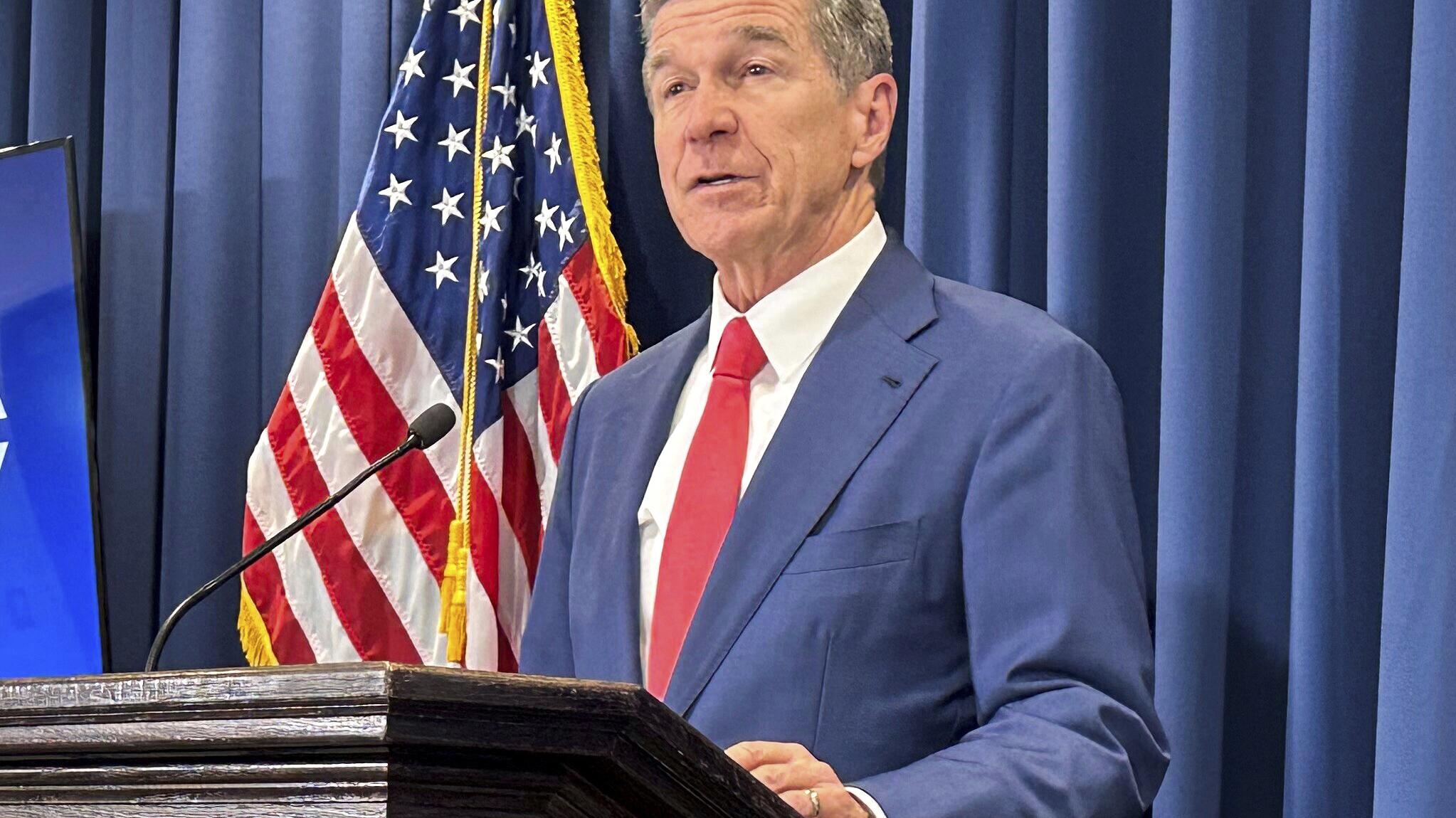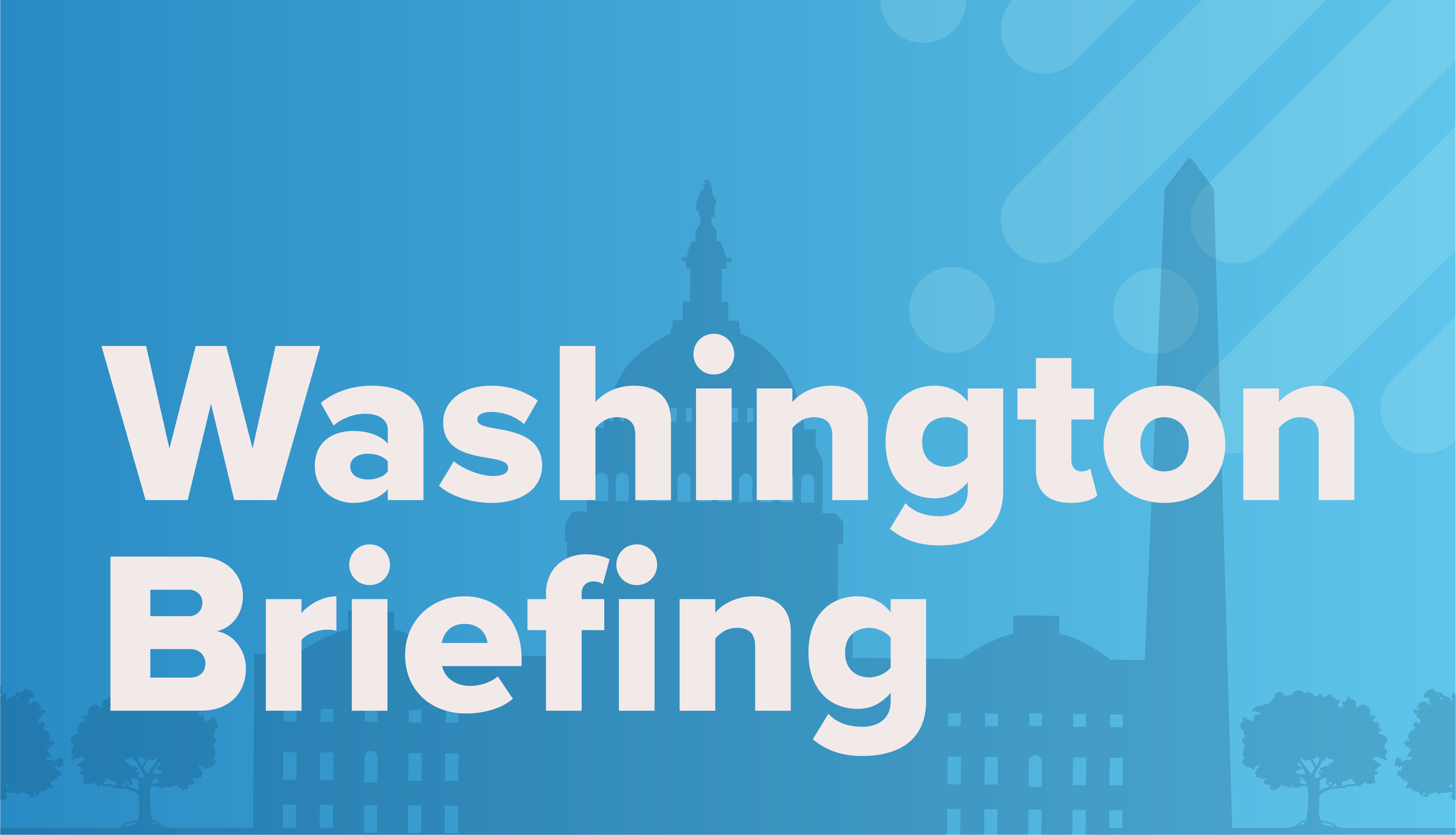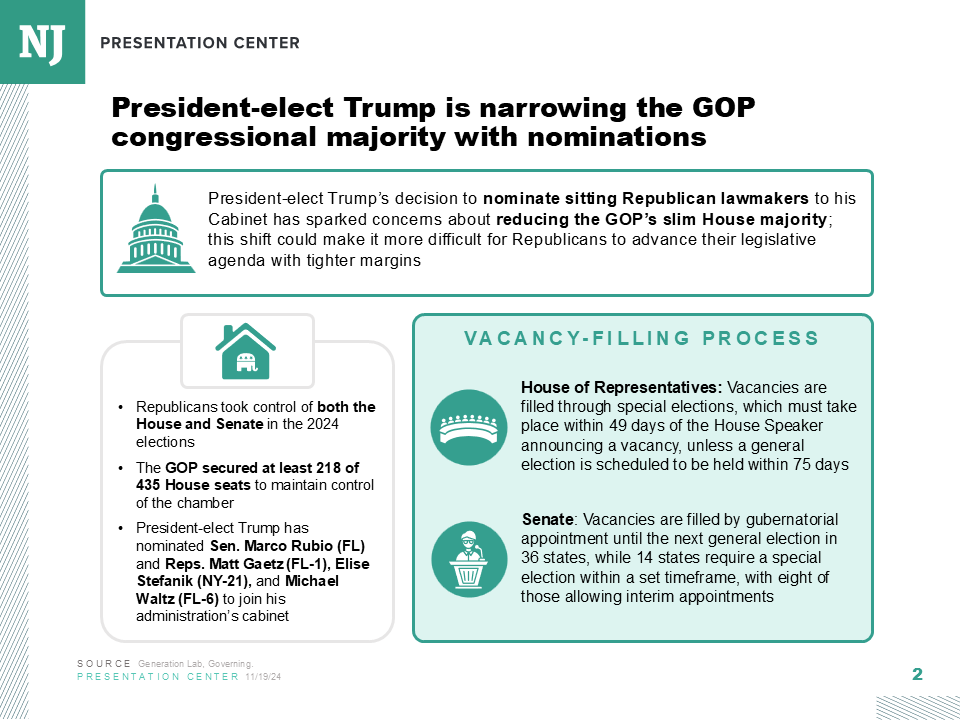Senate Democrats have a clearer path to regain the majority in 2026, but they acknowledge it’s a difficult lift for the minority party to gain four seats on a map that skews red.
Recruitment wins, open GOP-held seats, and an expensive Texas GOP primary are fueling Democratic hopes that they can regain ground in red states after completely disappearing in 2024. Democrats are also looking to defy historical trends; the last time Senate Democrats returned to power after one cycle was in 1954.
Republicans say they remain confident they can expand their 53-seat majority to 55 seats—a share the party hasn’t reached since 2004.
Minority Leader Chuck Schumer scored recruitment coups for his party in Maine, North Carolina, and Ohio. But Democrats face a plethora of competitive primaries that could upend their takeover goal, as Schumer and other Washington Democrats either publicly or privately signal their preferred choices in Iowa, Maine, Michigan, and Minnesota.
Republicans have landed their fair share of recruits on the map as well, including Rep. Ashley Hinson in Iowa, former Sen. John E. Sununu in New Hampshire, and former Republican National Committee Chairman Michael Whatley in North Carolina. The GOP will need to navigate contentious primaries in Georgia and New Hampshire, as well as spirited primary challenges in Louisiana and Texas.
These rankings are based on conversations with operatives, strategists, campaigns, and pollsters in both parties.
1. North Carolina: Open (R)
Former Gov. Roy Cooper’s entrance into the open race could help Democrats score their first Senate win in the Tar Heel State since 2008. Cooper has led Whatley in several polls and outraised the Republican, $10.9 million to $1.4 million, during the third fundraising quarter. Democratic strategists view this as their strongest pickup opportunity on the map, and also as essential for their ambitions to win the state’s other Senate seat and presidential electoral votes in 2028. Republicans question Democrats’ optimism, expressing confidence that their recent statewide success at the federal level and their gains in voter registration will push Whatley across the finish line. Despite Cooper’s decades-long political career and his two gubernatorial wins with President Trump on the ballot, he’ll be running in his first federal race. With no electoral experience, Whatley will have to catch up to Cooper’s statewide name recognition and compete with a swath of Democratic spending that’s expected to flood the state.
2. Georgia: Sen. Jon Ossoff (D)
Ossoff is the most vulnerable incumbent on the map, but it could have been worse for him. Term-limited Republican Gov. Brian Kemp passed on a Senate campaign, opting instead to support his friend Derek Dooley in the GOP primary. Kemp staying on the sidelines opened the floodgates for a slew of B-level candidates such as Dooley to duke it out in what’s shaping up to be a competitive primary. Still, any of these JV Republicans could beat Ossoff, the youngest member of the Senate. When he was last on the ballot in 2020, Ossoff benefited from Stacey Abrams’s massive GOTV effort, the energy of a presidential election—and then Trump depressing GOP turnout during the January runoff with his claims of widespread voter fraud. Next year it’s all about Ossoff, but his $12 million fundraising quarter over the summer means that he’ll have plenty of resources to put up a fight.
3. Maine: Sen. Susan Collins (R)
Collins is Democrats’ white whale, and this is the year they say they’ll finally catch her. But the last remaining Republican senator representing a state that Democrats carried in the last three presidential elections won’t go down easy. She’s defied political gravity before, most notably during her last reelection in 2020, when she was heavily outspent by her Democratic opponent. Democratic strategists say her historically low favorability numbers, thanks in part to her lackluster resistance to the Trump administration, will flip the script this time around. But a messy Democratic primary threatens the party’s best-laid plans. In one corner is outgoing Gov. Janet Mills—the establishment favorite and a huge recruitment win for Schumer—but she would be 79 years old in January 2027, the oldest freshman senator ever. In the other corner is oyster farmer Graham Platner, a populist darling who has caught the eye of the progressive base, but a series of scandals threaten to derail his campaign. Platner has vowed to stay in the race, and his massive early fundraising edge could make this race go the distance.

4. Michigan: Open (D)
With nearly 10 months to go until the primary, the Democratic contest to replace retiring Sen. Gary Peters isn’t getting clearer. Schumer and his allies believe Rep. Haley Stevens has the best chance of holding the state’s second Senate seat for Democrats. State Sen. Mallory McMorrow and 2018 gubernatorial candidate Abdul El-Sayed hope to challenge the Washington narrative. Stevens has led in early primary surveys and performed comparatively well in general-election polls, but her opponents argue she’s benefitting from higher name ID and could be uniquely vulnerable to anti-establishment sentiment and GOP attacks.
Meanwhile, former Rep. Mike Rogers is showing what he learned from his unsuccessful 2024 run, strengthening his fundraising operation and consolidating GOP support early with help from Trump and the National Republican Senatorial Committee. Republicans also view next year’s Democratic competition as weaker than Sen. Elissa Slotkin, who held off Rogers last year. Rogers will still need to defy electoral trends to secure his state’s first GOP Senate win since 1994, and his allies believe it will be expensive to get him across the finish line. Democrats say Rogers will be a weaker opponent in 2026, expressing doubt about his goal of securing at least 85 percent of his 2024 voters.
5. New Hampshire: Open (D)
Republicans couldn't recruit former Gov. Chris Sununu, so they turned to the next best thing: his brother. With help from Majority Leader John Thune, former Sen. John E. Sununu is keeping GOP hopes alive in the Granite State as he runs for the seat he lost to retiring Sen. Jeanne Shaheen in 2008. New Hampshire Democrats have consistently scored federal wins since 2016, but Republicans have held onto the governor’s mansion. The NRSC-backed former senator will need to first hold off former Sen. Scott Brown of Massachusetts, who lost to Shaheen in 2014, in a potentially nasty GOP primary. Sununu has been critical of Trump in the past, supporting his opponents during the 2016 and 2024 primaries and calling him a “loser” in an op-ed last year. But polling, both partisan and nonpartisan, shows Sununu closely behind Rep. Chris Pappas in a margin-of-error contest—a better showing than a Brown-Pappas matchup. If Sununu clears the primary, Pappas and Democrats will have to convince voters to ignore the Republican’s highly recognized last name and focus on his record.
6. Ohio: Sen. Jon Husted (R) ↑
One of Schumer’s biggest wins this cycle was convincing former Sen. Sherrod Brown to forgo a gubernatorial bid and take another crack at the Senate. Without Brown, this race would not be on the map, but he will still have a difficult time beating back the partisan tide that swept him away last year. Democrats are bullish that Brown has the juice to flip this seat, even though it’s not the same Ohio that first elected him in 2006. Trump carried the state three times, with his largest margin coming last year when he romped over former Vice President Kamala Harris by 12 points. The state is also poised to elect Vivek Ramaswamy, the Trump ally and brief co-lead of the administration’s Department of Government Efficiency, to replace term-limited moderate Republican Gov. Mike DeWine.
7. Texas: Sen. John Cornyn (R) ↓
The competitiveness of this race next November will come down to the GOP primary in the spring. If state Attorney General Ken Paxton—the controversial MAGA ally who was nearly impeached by the state legislature—defeats Cornyn for the nomination, Democrats have a puncher’s chance and will invest millions into finally flipping Texas. But if Cornyn survives the primary, Texas will drop on Democrats’ priority list. Complicating Paxton’s chance is Republican Rep. Wesley Hunt. The Houston-area congressman launched a challenge to Cornyn in the fall, positioning himself as a “new generation” of MAGA. Hunt threatens to siphon support from both Cornyn and Paxton. If none of the candidates gets a majority in the March primary, the top two advance to a May runoff. Overtime in the primary will have a much larger price tag for Republicans, draining resources that could go to pickup opportunities in Georgia or Michigan. On the Democratic side, former Rep. Colin Allred is back again after losing by about 10 points to Sen. Ted Cruz last year. Allred said he’s retooled his campaign, but he won’t have a glide path to the nomination. State Rep. James Talarico, the plainspoken son of a preacher, has caught the attention of the pundit class and could beat the former congressman in the primary.
8. Iowa: Open (R) ↓
The retirement of Sen. Joni Ernst is giving both parties optimism. The White House actively pressured Ernst to run for reelection, viewing her incumbency as a strength in the Hawkeye State. But several GOP strategists recognize the baggage the senator could have brought to a reelection bid, pointing to her grim response to a May town hall question about Medicaid cuts. Rep. Ashley Hinson’s Senate ambitions alleviated those concerns. The congresswoman rapidly assembled her Senate campaign team amid the Ernst retirement rumors and quickly coalesced GOP support, including from Trump and the NRSC.

Democrats haven’t secured a Senate win in Iowa since 2008, but the party isn’t ignoring the state’s first Senate vacancy since 2014. State Sen. Zach Wahls, state Rep. Josh Turek, and former Knoxville Chamber of Commerce Executive Director Nathan Sage are competing for the Democratic nomination. National Democrats say Turek—who hails from a Trump-won district—has the best chance against Hinson, but some Republican operatives believe Wahls has a stronger chance of clearing the primary. Despite Republicans holding a nearly 200,000-registered-voter advantage in Iowa, Democrats hope recent state-legislative flips and an open governor’s race featuring state Auditor Rob Sand could turn the tide in their favor.
9. Minnesota: Open (D) ↓
Inclusion of this race on the list is a testament to the larger national trends influencing the purple state, but it says much less about how Republicans on the ground are going about the campaign to replace retiring Democratic Sen. Tina Smith. Despite the prospect of an open-seat race a year after the GOP made gains in Minnesota, only two main Republicans have emerged, while the gubernatorial race has garnered much more interest. The two front-runners are former NBA player Royce White, a controversial conspiracy theorist who lost to Democratic Sen. Amy Klobuchar last year, and retired Navy SEAL Adam Schwarze, who has lagged in fundraising. In the Democratic primary, Rep. Angie Craig squares off against Lt. Gov. Peggy Flanagan. Both women would be formidable candidates to succeed Smith, and either one should have no real challenge if Republicans continue struggling to find more legitimate alternatives than the current offerings.
10. Alaska: Sen. Dan Sullivan (R) ↓
Former Rep. Mary Peltola has the right of first refusal to either challenge Sullivan or pursue a gubernatorial bid. Similar to Iowa and North Carolina, Alaska hasn’t elected a Senate Democrat since 2008, when Mark Begich unseated GOP Sen. Ted Stevens after his conviction on federal corruption charges. Peltola, the last Alaska Democrat to be elected statewide, may be able to recover from her 2024 loss to win a Senate upgrade. An October Alaska Survey Research poll found Peltola at 48 percent and Sullivan at 46 percent, a 6-point improvement for the Democrat since the summer. But the former congresswoman will need to actually launch a Senate bid in order for Democrats to comfortably put Alaska on the battleground map, especially as backup contenders await her decision. Republicans project confidence in Sullivan’s reelection chances, but they aren’t ignoring that this is the senator’s first election under the state’s ranked-choice voting system. The same October poll found 37 percent of Alaska voters viewed Sullivan positively and 50 percent viewed him negatively. The GOP incumbent will be tasked with selling the president’s One Big Beautiful Bill in his state and defending its reductions to federal entitlement spending in one of the most Medicaid-dependent states, while touting its Alaska-specific provisions.






